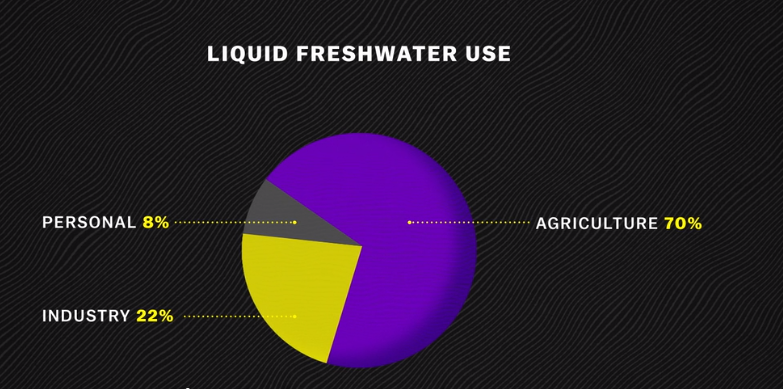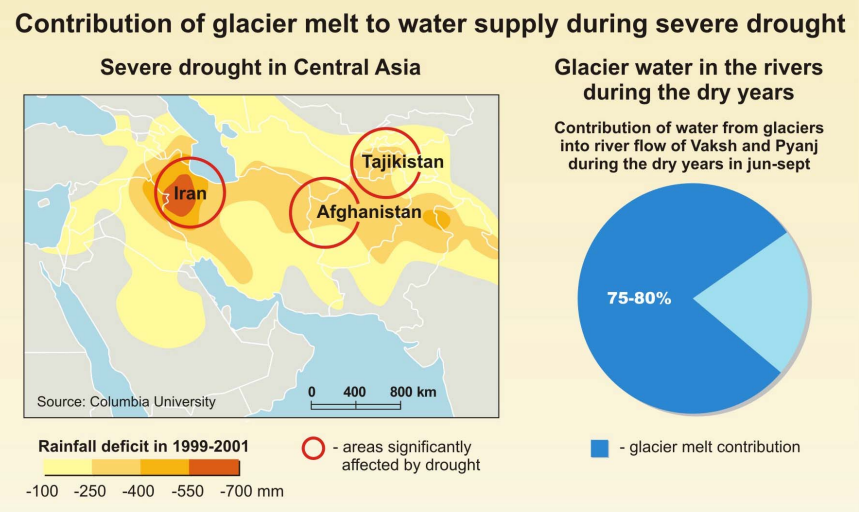The world’s fresh water is very unevenly distributed. Look at water rich countries
Before talking about product efficiency and less environmental damage, it is the duty of water independent countries to share its resources. Positive outcome of sharing water though agreements is examined in Part 1. For the benefit of regional development, water rich countries needs its neighbors to get stronger especially for those whose main need is water.
Virtual Water Calculation Creates Mindful Consumption of Water
Almost all product contains virtual water. It is not visible from outside, but the amount of water required to produce a product is immense. From the start to the finish this hidden water is mainly neglected. For example it doesn’t seems visible but a simple jeans production uses more virtual water than its own texture.

Total water consumption contains actual water plus virtual water. That’s why experts are working on finding ways for the calculation of virtual water consumption.
Virtual water is normally divided into three categories for classification: blue, green and grey. Blue water is water contained in rivers and lakes and is processed by the water companies to supply public and commercial demand. This water is used mainly in the food processing industry. Green water is water supplied through rainfall and contained in soils. Most of the agricultural production is based on this water. The concept of grey water is traditionally wastewater, from domestic or commercial sources. It is mildly contaminated with detergents or other pollutants.
We should target protecting blue virtual water usage. A concrete example, Cote d’Ivoire, Ghana and Brazil uses green water resources for rain-fed agriculture. However, Thailand uses blue water to produce rice for export, this puts additional pressure on the country’s national water resources. That’s why importing products produced with high ratio’s green water versus blue virtual water saves global blue water resources. More info.
Therefore, consumers should be informed about how much blue water a product contains. Products with more blue water should be more expensive. This will reduce the usage of blue water sources and put pressure on producers.
Optimist Examples of Existing Solutions
- It seems very basic but turning off the tap while we brush our teeth, can save 6 liters of water per minute per person.
- Climate change reduces rainfall and increases evaporation. More studies should be done on the increase part of water supply to rivers and lakes in the short to medium term. For instance, future flows in the River Thames at Kingston shows a possible 11% increase over the next 80 years relative to the last 60 years. [1] How can this increase in water benefit the future of blue water?
- We should work more on climate damages caused by climate change. As an example the map shows the contribution of glacier melts to water supplies.
- In most cities, rain is simply channeled into sewers, but storm water can be recycled and reused—as can wastewater cities such as Singapore treat and use to meet %40 of total water needs.[2]
- Water containment systems are essential for areas with no other reliable water sources. Efficient irrigation’s methods can help in reorganizing better the water sources. We have almost %50 of unnecessary leakages. Some governments promote subsidies for the water sector such as Philadelphia to control inefficient and wasteful water use.
- Israel can produce %50 more drinkable water than needed by their population thanks to desalination plants. Saudi Arabia could be fostering a new kind of desalination with its recent announcement to use solar-powered plants.
- Water resources could be used more efficiently in a basin-wide approach such as upper stream countries having more favorable production conditions in exchange of importing their hydropower to downstream countries, they can benefit from financial services in return.
- The U.S. government is considering expanding the Clean Water Act to ensure more protections. Russia has approved waste discharges in Lake Baikal, one of the world’s largest bodies of freshwater.

Call For Action
Big gains come from small changes. The current tendency of developed countries changing the diet to meat consumption needs 10 times more water than plants. Therefore, we can change our diet to once a week meat consumption rather than every day. This is one of the simple optimist engagement.
Second optimist suggestion is raising water prices will help firstly reducing the environmental exploitation but also lowering waste and pollution especially for active industries. Not only for luxury products or alcohol, but the water should also benefit a special tax as well. If a beer company uses more water in their product (because nearly all products contain water) they should pay consumption tax. Eventually, the shop and the clients have to pay more too. But this way the governments won’t treat water as if it is unlimited in nature.
The states have to stop offering free water usage in exchange for calling investments in their countries. This favoritism is not in favor of the environment but in favor of business. Water belongs to every one and states should only take important decision with the citizen’s full consent. We suggest the optimist use of water whoever uses more has to pay more. Another necessary step is not growing crops that don’t make sense like in arid places such as a desert. This is just a waste of more water. These exciting solutions permit us to be optimistic and prevent an upcoming water crisis.
[1] https://www.ceh.ac.uk/our-science/projects/future-flows-and-groundwater-levels
[2] https://www.foreignaffairs.com/articles/world/2018-03-20/how-solve-global-water-crisis


